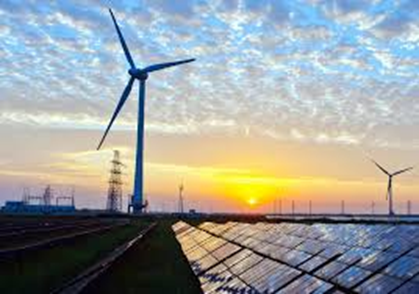
The Future of Kenya’s Energy Transition: Driving New Business Opportunities
Introduction

Kenya is undergoing a transformative energy transition aimed at sustainability, economic growth, and business innovation. As the nation accelerates its shift toward renewable energy sources such as wind, solar, and geothermal, businesses across various sectors are presented with unprecedented opportunities. This energy evolution is not just about cleaner power; it is also about fostering a thriving economic landscape where enterprises can leverage new energy technologies to enhance productivity and profitability. In this blog, we will explore Kenya’s energy transition, the sectors benefiting from it, and the key challenges and opportunities ahead.
Kenya’s Commitment to Renewable Energy

Government Policies and Investments
Kenya has positioned itself as a leader in renewable energy within Africa, with the government actively promoting policies that support clean energy. The National Energy Policy outlines ambitious targets for increasing the share of renewable sources in the energy mix, aiming for over 80% reliance on renewables by 2030. Programs such as the Least-Cost Power Development Plan (LCPDP) and incentives for private-sector investments in green energy further strengthen the transition.
Major Renewable Energy Projects
Geothermal Energy: Kenya ranks among the world’s top producers of geothermal energy, with Olkaria Geothermal Plant contributing significantly to the grid.
Wind Energy: The Lake Turkana Wind Power project is Africa’s largest wind farm, supplying clean power to millions of households and businesses.
Solar Power: Several large-scale solar projects, including the Garissa Solar Plant, are enhancing Kenya’s capacity to harness solar energy efficiently.
New Business Opportunities Arising from Energy Transition

Green Manufacturing and Industrial Growth
Industries and manufacturers can now leverage affordable renewable energy to reduce operational costs and improve efficiency. Green energy adoption enhances sustainability and makes Kenyan products more competitive in global markets, particularly in sectors like agribusiness, textile manufacturing, and construction.
Expansion of Off-Grid Energy Solutions
With some rural areas still lacking access to the national grid, the demand for off-grid energy solutions is growing. Solar home systems, mini-grids, and decentralized renewable energy projects present lucrative opportunities for entrepreneurs and investors aiming to provide energy solutions to underserved communities.
E-Mobility and Electric Vehicles (EVs)
Kenya’s transport sector is experiencing a shift toward electric mobility, driven by lower energy costs and environmental sustainability. Businesses are now investing in EV manufacturing, battery storage solutions, and charging infrastructure, creating a new market for automotive innovation.
Smart Grid and Energy Tech Innovations
The digital transformation of Kenya’s energy sector is fostering the adoption of smart grid technologies, which optimize power distribution and consumption. Entrepreneurs and startups are exploring innovations such as AI-powered energy management systems, blockchain-based energy trading, and IoT-driven smart metering.
Carbon Credit and Climate Finance Opportunities
Companies that invest in sustainable energy projects can benefit from carbon credits and access international climate finance opportunities. Organizations in agriculture, forestry, and clean energy sectors can generate additional revenue by participating in global carbon markets.
Challenges in Kenya’s Energy Transition

Infrastructure and Grid Stability
While renewable energy capacity is expanding, the national grid still faces challenges in integrating intermittent energy sources. Upgrading grid infrastructure is crucial to ensuring a stable and reliable power supply.
Investment and Financing Constraints
Despite government incentives, access to financing remains a barrier for businesses looking to invest in clean energy technologies. More funding from private investors, international donors, and public-private partnerships is needed.
Regulatory and Policy Gaps
Inconsistencies in energy regulations and policies can create uncertainty for investors and businesses. Clear and stable regulatory frameworks are essential to fostering long-term investments in the sector.
Conclusion
Kenya’s energy transition presents a unique opportunity for businesses to drive economic growth while embracing sustainability. From renewable energy production to smart grid technologies and e-mobility, numerous sectors stand to benefit from the shift to clean energy. However, addressing infrastructural challenges, financing gaps, and regulatory issues will be critical in maximizing these opportunities. As Kenya continues to lead in green energy, businesses that adapt early will be at the forefront of this transformation.
References
Government of Kenya – National Energy Policy: energy.go.ke
Kenya Electricity Generating Company (KenGen) – Renewable Energy Projects: kengen.co.ke
International Renewable Energy Agency (IRENA) – Kenya Energy Transition Report: irena.org
United Nations Development Programme (UNDP) – Kenya Green Energy Initiatives: undp.org
World Bank – Renewable Energy Investments in Kenya: worldbank.org








